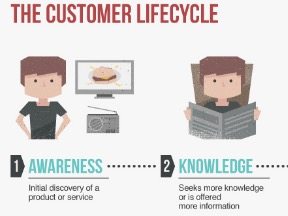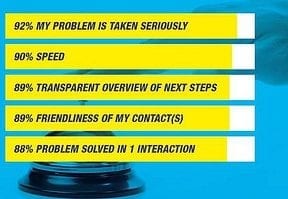Your customers are in control, and that could be very good for your ecommerce business. When stores compete on customer experience, small and mid-sized online retailers have an opportunity to challenge even the largest sellers.
The term “customer experience” has come to describe the effect of the accumulation over time of interactions between a business — your business — and its customers.
Everything about your company, including your brand’s story, your content, and even website performance, contributes to customer experience and has the potential to influence sales.
Customer experience ultimately seeks to please consumers, to develop a reciprocal relationship between store and shopper.
Customers Control Retail

Shoppers often have the choice to purchase products from many different retailers online or at physical stores. Customer experience can help your business earn sales without focusing on price. Image: Jiří Wagner.
Shoppers have choices.
If a shopper needs a pair of socks, there are probably a dozen physical stores selling socks within a 10-mile radius of her home. And there are, without exaggeration, thousands of stores selling socks online.
Many of these sellers will carry the exact same package of socks from the identical manufacturer and offer them at precisely the same retail price.
This customer’s problem is not how to get socks, but from which store to buy them. So how does she make her choice?
Price will certainly sway her, but so will convenience. Style, color, and availability may also impact her choice. In fact, so will a company’s brand, its content, and how she feels about the business.
Doug Stephens, a retail advisor and founder of Retail Prophet, a consulting firm, has said that “people may not need what you sell, but they need how you sell it….Today, it is not about conversion. It’s about creating converts for the brand.”
This is customer experience. It is the art of selling more than just an item, but rather developing a reciprocal relationship with shoppers that motivates them to buy from your business instead of from your competitors.
Many companies already understand this. Research firm Gartner surveyed 1,000 marketers and found that nearly nine out of 10 believed that customer experience would become the primary way they differentiated their business from their competition this year.
Customer Experience Is Leveling
In April 2017, PetSmart bought Chewy.com for $3.35 billion, making what may be the richest ecommerce acquisition ever and nudging out the $3.3 billion Walmart paid for Jet.com.
PetSmart, which has more than 1,400 stores, is one of the largest pet food and pet supply retailers in the United States. Before a private equity group led by BC Partners took the company private in 2015, PetSmart had been reporting quarterly revenue approaching $2 billion. So why would it need Chewy.com?
“Chewy’s high-touch customer ecommerce service model and culture centered around a love of pets is the ideal complement to PetSmart’s store footprint and diverse offerings,” PetSmart C.E.O. Michael Massey said in a statement.
Put another way, Chewy provided a better customer experience and it paid off.
Using a subscription business model and a level of customer service fanaticism that would make Zappos jealous, Chewy has some 3.8 million customers, about $900 million in annual revenue, and 48 percent of online pet food sales, according to eMarketer.
Customer experience allowed Chewy.com to go from startup just six years ago to selling more pet food online than Amazon.
Customer experience is also leveling for small and mid-sized ecommerce businesses. It allows your store to establish a niche, if not in products, in how you sell.
Large retailers, such as Amazon, Walmart, and Target, have significant competitive advantages. They offer a greater breadth of product. They buy products less expensively. They have mastered ecommerce logistics.
If your company tries to compete with these massive retailers on price, product, or shipping, your business will probably lose. But you can compete on customer experience.
How to Create Good Customer Experience
Managing or creating a good retail customer experience requires insights, a customer focus, and a willingness to think differently about your ecommerce operation.
You may need to sell differently, with differentiated products, or excel at services such as customer support, community, and content.
Your business may also need to invest differently. For example, recent retail casualties may have failed to invest in customer intelligence (understanding what customers want or need), business technology to deliver a better experience, and employees who can interact and serve customers.
Finally, your ecommerce business may need to change its culture, adopting new approaches to business. For example, do you A/B test customer experience? Do you allow shoppers to define how they interact with your company or do you try to force them into a funnel?
Don’t look for a one-size-fits-all way to manage customer experience. Rather, look for a way to convert shoppers to your brand.





